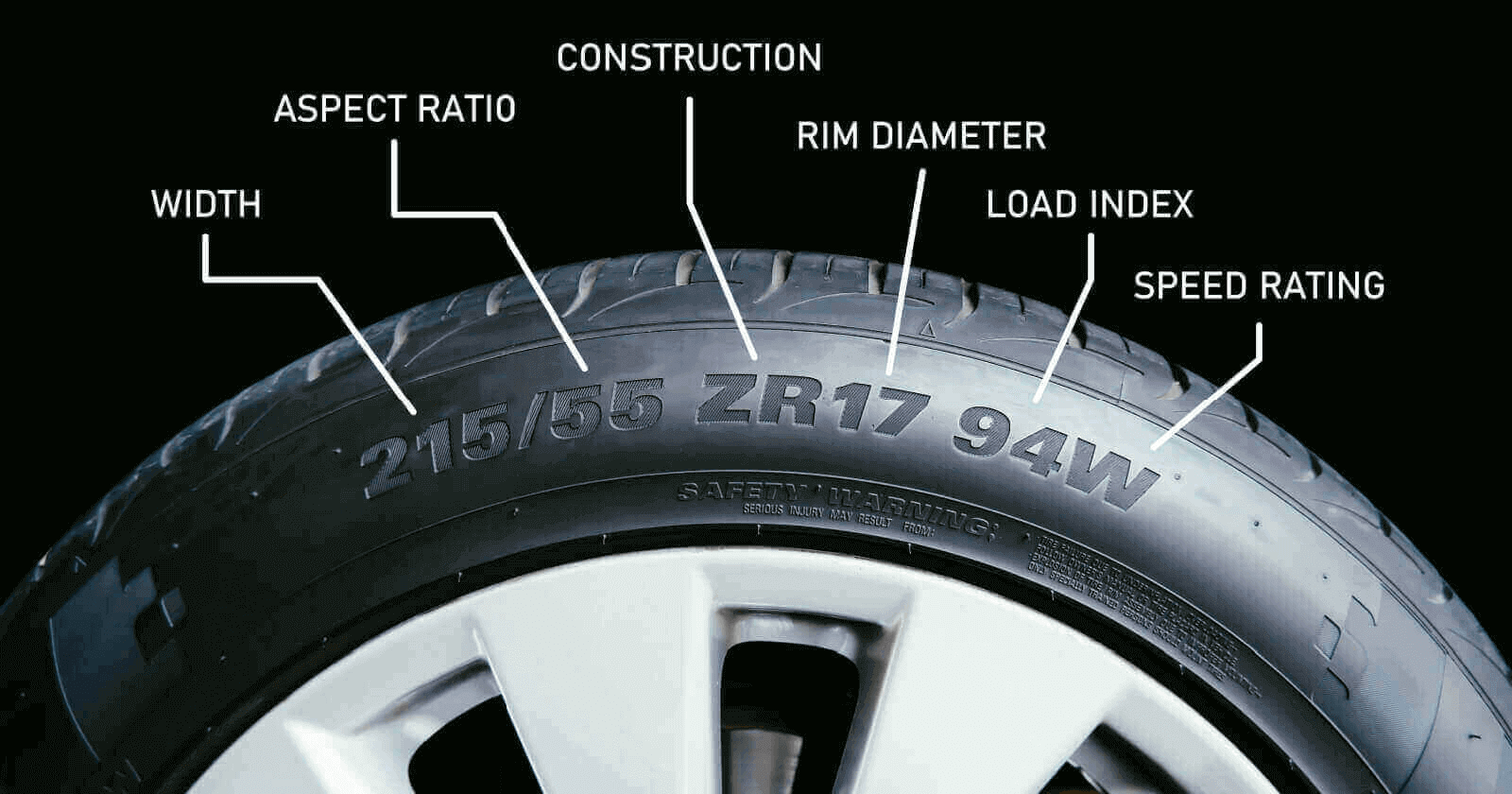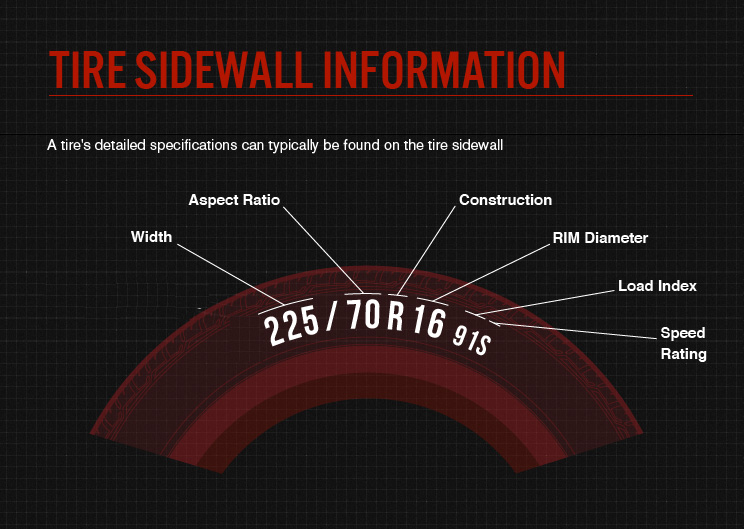Top 10 Insights on Tire Speed Ratings
Discover the top 10 crucial insights about what speed rating on tires means for your vehicle's performance and safety.

Understanding what speed rating on tires means is crucial for optimizing your vehicle's performance and keeping you safe on the road. This concept, often overlooked, is the key to ensuring your tires can handle your vehicle's speed capabilities without compromising safety. This article unveits the top 10 insights into tire speed ratings, shedding light on how they impact performance, safety, and overall driving experience.
What is Speed Rating on Tires?
The speed rating of a tire signifies the maximum speed a tire can safely maintain over time. Assigned by manufacturers based on rigorous testing, this rating is not just a suggestion but a critical piece of information for matching tire capabilities with vehicle needs. Understanding these ratings can prevent accidents, enhance your vehicle’s handling, and ensure optimal tire lifespan.
List of Top Choices
- Understanding the Basics of Speed Ratings
- Why Speed Ratings Matter
- How Speed Ratings Affect Safety
- Impact on Performance
- Interpreting Speed Rating Symbols
- The Role of Load Index in Speed Ratings
- Choosing the Right Speed Rating for Your Vehicle
- Effect of Speed Ratings on Tire Wear
- Common Misconceptions about Speed Ratings
- Speed Rating and Tire Replacements: What You Need to Know
Understanding the Basics of Speed Ratings

- Speed rating indicates the max speed a tire can safely handle.
- It's determined through controlled tests by manufacturers.
- Speed ratings are represented by letters, from A to Z.
At the heart of tire performance lies the speed rating, a critical factor that determines the limits of what your tires can safely endure. It's not about the thrill of speed but about safety and reliability. Manufacturers establish these ratings after extensive testing, ensuring that each tire can withstand certain speeds while maintaining performance. The ratings, denoted by letters ranging from A (the lowest) to Z (the highest), guide consumers in making informed choices that align with their vehicle's capabilities and their driving needs.p>
Why Speed Ratings Matter
- Matching tires to vehicle speeds ensures safety.
- They influence handling and performance.
- Ensures compatibility with vehicle design and purpose.
Understanding and adhering to tire speed ratings isn't just a technical necessity; it's a matter of safety. By ensuring that your tires are suited to your vehicle's maximum speeds, you’re not only protecting yourself but also enhancing the overall performance and handling of your vehicle. More than just numbers and letters, these ratings ensure that the tires you choose are fit for purpose, whether that's cruising on the highway or navigating tight city streets. It’s about making sure that your vehicle performs as it was designed to, under all conditions.
How Speed Ratings Affect Safety

- Higher rated tires typically offer better grip and stopping power.
- Appropriate ratings prevent overheating and tire failure at high speeds.
- They contribute to vehicle stability and driver control.
The link between speed ratings and safety is undeniable. A tire designed to handle higher speeds will usually provide better grip and braking capabilities, essential aspects of safe driving. Moreover, tires that are appropriate for your vehicle's speed prevent the risk of overheating and potential failure—a common cause of accidents at high speeds. Speed ratings are not just numbers; they're a guarantee of stability, giving drivers control and peace of mind, especially in demanding driving conditions.
Impact on Performance
- Higher speed ratings can improve handling and responsiveness.
- Optimized for different driving conditions based on speed capability.
- Influences fuel efficiency and ride comfort.
Tire speed ratings have a profound impact on your vehicle's performance. Tires with a higher speed rating generally offer enhanced handling and responsiveness, making for a more dynamic driving experience. Whether you're facing winding roads or straight highways, the right speed rating ensures your tires are optimized for the journey. Moreover, this rating affects not just how your car feels on the road but also aspects like fuel efficiency and comfort. Choosing the right speed rating means balancing the thrill of performance with the practicality of daily driving.
Interpreting Speed Rating Symbols
- Each letter corresponds to a specific top speed in mph.
- Common ratings include T (118 mph), H (130 mph), and V (149 mph).
- Always refer to the vehicle's manual for recommended ratings.
Deciphering speed rating symbols is akin to learning a language that aligns your tires with your vehicle's performance needs. From T-rated tires, suitable for most family sedans, to V-rated ones for high-performance vehicles, understanding these symbols is key to selecting the right tire. Always cross-reference your choice with the recommendations found in your vehicle's manual—an essential step to ensure safety and performance. With this knowledge, you're not just choosing tires; you're tailoring your vehicle to meet specific driving demands.
The Role of Load Index in Speed Ratings

- Load index indicates how much weight a tire can support.
- It works in tandem with speed ratings for optimal safety.
- Choosing the right combination is crucial for vehicle performance.
The load index might not directly influence speed but it's an essential counterpart to speed ratings in ensuring your tires can safely bear your vehicle’s weight while achieving its top speed. This combo of load capacity and speed capability ensures that your vehicle remains stable and safe, whether it's lightly loaded on a solo journey or carrying the full weight of passengers and gear. Making informed decisions based on both figures is a critical step in not just meeting but exceeding vehicle performance and safety standards.
Choosing the Right Speed Rating for Your Vehicle
- Consult the vehicle's owner manual for manufacturer recommendations.
- Consider your typical driving conditions and style.
- Don’t downgrade from the OEM-recommended speed rating for safety.
Choosing the correct speed rating for your tire is not just about adhering to technical specifications; it's about matching your tire's performance with how and where you drive. The vehicle's owner manual is your starting point, offering the manufacturer's recommended rating that ensures optimal performance and safety. Yet, your driving style and typical conditions—whether urban commutes or highway journeys—also play a crucial role. It’s vital to never downgrade from the recommended rating, as doing so can compromise your vehicle's handling and your safety on the road.
Effect of Speed Ratings on Tire Wear

- Faster speeds generally increase tire temperature, affecting wear.
- High-speed-rated tires may wear quicker under normal driving due to their softer composition.
- Maintaining proper inflation levels is key to optimizing tire lifespan.
While it's essential to choose tires that can handle your vehicle's speed, it's equally important to consider how this choice affects tire longevity. High-speed-rated tires, designed for greater performance, often use softer materials that can lead to quicker wear under regular driving conditions. This doesn't mean you should avoid these tires, but rather that you should be mindful of their characteristics. Regularly checking and maintaining proper tire inflation is a simple yet effective way to ensure your tires—regardless of their speed rating—serve you well for as long as possible.
Common Misconceptions about Speed Ratings
- Higher speed ratings don’t mean better overall tire quality.
- Speed ratings are not the only factor in choosing a tire.
- Exceeding speed ratings doesn’t immediately damage tires, but it's not recommended.
Several misconceptions surround tire speed ratings, potentially leading consumers astray. A higher speed rating doesn't necessarily indicate a higher quality or more durable tire; it simply specifies the tire's ability to handle certain speeds. Furthermore, while speed ratings are crucial, they're just one piece of the puzzle when selecting the best tire for your needs. Importantly, while modern tires can sometimes exceed their designated speed ratings, routinely pushing your tires beyond these limits is risky and can lead to premature wear or failure. Always prioritize safety and suitability over speed.
Speed Rating and Tire Replacements: What You Need to Friendship with Car Owners

- Match new tires’ speed ratings with the originals or higher.
- For vehicles with different front and rear tire sizes, consult a professional.
- Consistency in speed ratings across all tires ensures balanced vehicle performance.
When the time comes to replace your tires, the speed rating should not be taken lightly. Ensuring that your new tires have the same, if not better, speed ratings as the originals is crucial for maintaining your vehicle’s performance and safety. This becomes even more important for vehicles requiring different tire sizes on the front and rear, where professional guidance can be invaluable. Keeping a consistent speed rating across all four tires guarantees the balanced handling and stability that drivers expect from their vehicles.
Summing Up Tire Speed Ratings
In the whirl of specifications and ratings that define the world of tires, speed ratings hold a place of prominence. They guide us in choosing tires that fit our vehicles, safeguard our journeys, and enhance our driving experience. From understanding the basics to selecting the perfect match for our cars, speed ratings offer a pathway to informed decisions and driving confidence. As we’ve seen, the implications of these ratings span safety, performance, and even the wear and tear of our tires—emphasizing their role not just in the realm of speed, but in the overall health and capability of our vehicles. Next time you're evaluating tires, remember the comprehensive influence of speed ratings and choose wisely. Your vehicle’s performance and your safety could depend on it.
What's Your Reaction?









































































